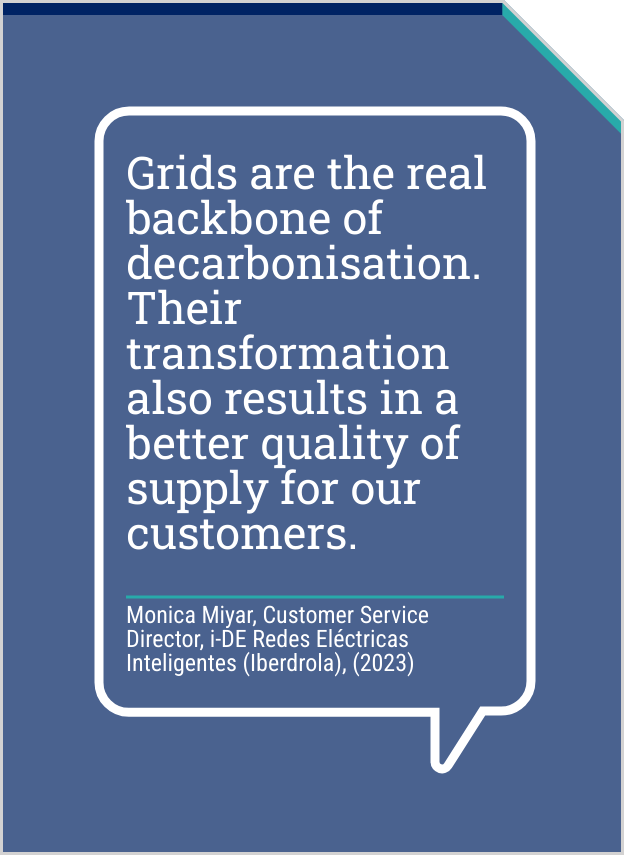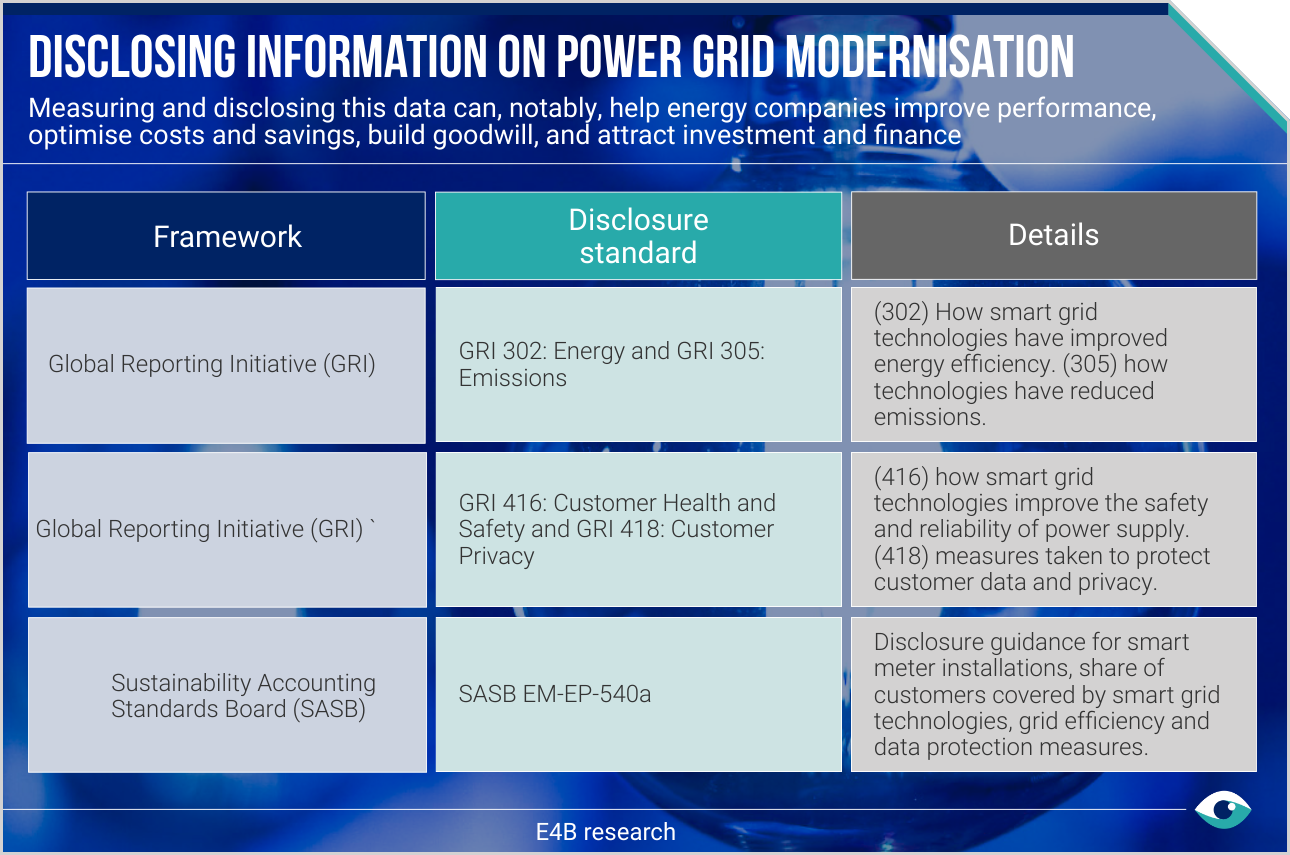Earlier in 2024, Enel announced plans to spend EUR 18.6 billion on improving grid quality, resilience and digitisation by end-2026. The IEA says that, as part of efforts to meet countries’ energy and climate goals, annual investment in grids must rise from USD 300 billion in 2023 to over USD 600 billion by 2030, focussing on digitising and modernising distribution. To better manage power systems, more firms must invest to upgrade grids with sensors and technologies that automatically monitor energy flows, adjust to changes in energy supply and demand, and integrate more variable distributed energy resources (DERs).

BACK

Companies pile on investments into modernising power grids
More is needed to build flexible, stable, reliable and resilient grids that can curb power wastage, costs and greenhouse gas emissions
Value chain: downstream
Electricity
AT A GLANCE
Grid investment lags behind global growth in renewable power generation, slowing the ongoing shift away from fossil fuels.
Poor financial health of utilities, limited access to finance, high cost of capital, cybersecurity threats and regulatory concerns over projects currently impede the advent of smart grids.
Smart grids can drive up usage of electric vehicles (EVs).

Smart power meters
Smart meters can measure the energy fed into and consumed from a power grid, share this information with power producers, consumers and grid operators, and help integrate DERs to the grid. The IEA says over 1bn of them have been installed globally. Energias de Portugal has set up over 6.4m such meters and aims to boost installation across its electricity systems, from over 80% currently to 100% by 2030. Iberdrola targets installing 21m such meters by 2025, up from 15m meters at present.
Sensing and monitoring
Sensors and monitoring devices can help automate power substations, feeders, lines and transformers. Installing over 200,000 devices that self-heal and minimise supply disruptions by automatically redirecting power when outages occur, helped NextEra Energy avoid more than 10m outages over the last decade. The SEC2GRID project by Iberdrola – which plans to boost the value of its grid assets from EUR 42 billion in 2023 to EUR 56 billion in 2025 – seeks to develop smart devices to secure grids from cyberattacks.

Data and software
Data-driven software helps too. Energias de Portugal’s ClimaGrid system uses weather forecasts and meteorological data to automate real-time interventions to limit physical risk to the power grid. Iberdrola's virtual power plant in Spain automatically dispatches active demand response services. Algonquin Power & Utilities’s pilot project for behind-the-meter batteries to automatically dispatch power to the grid during peak demand can curb charges and generate time-of-use bill savings.
Electric vehicles
Smart grids can drive EV uptake and vice versa, notably, by enabling bidirectional energy flow between grids and EVs — which allows EVs to serve as grid batteries — and by incentivising EV charging during off-peak hours and when wind and solar power is available. Energias de Portugal SA has an application that gives users a map of EV charging points across Portugal’s grid, details on a point’s availability and tariffs and linkages that enable using these points for charging EVs via clean energy.

BACK
